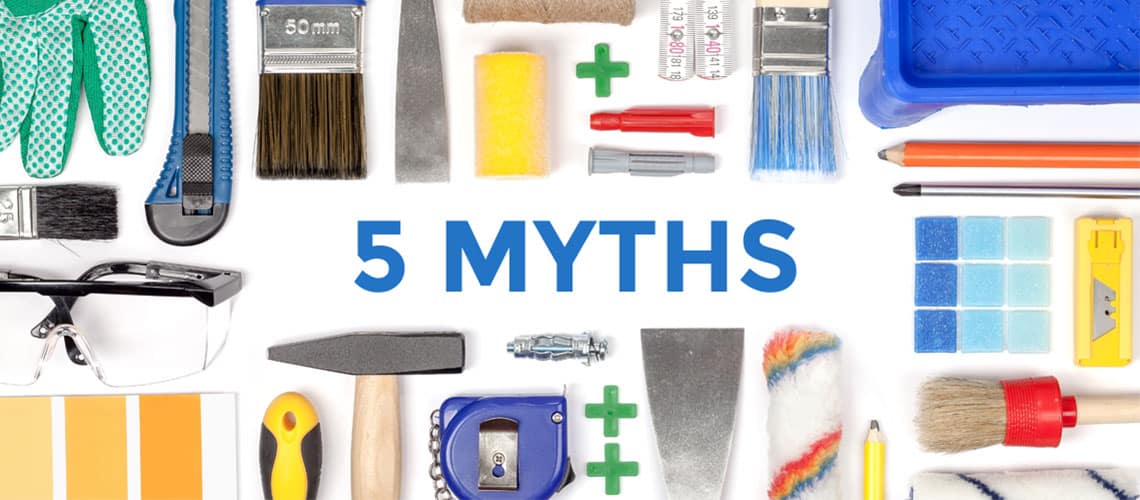For home buyers and homeowners planning to make updates or repairs to a property a renovation loan can be an excellent tool to leverage when arranging financing. Available for both purchases and refinances, a renovation loan allows for both the cost of the home and the cost of the work done to be covered with one low rate, first mortgage loan.
Because renovation loans are less common than the more typical mortgage where the loan amount is based on a percentage of the home’s value at closing, there can be a great deal of confusion surrounding these products on the part of consumers, and even industry professionals. Here we’ll seek to clear up some of the more common misconceptions we come across.
1. Only Available for Owner Occupied Properties
While eligibility requirements vary by program, some renovation loans are not restricted to just primary residences. For example, the HomeStyle® Renovation mortgage from Fannie Mae is available for one-unit second homes and investment properties as well as one- to four-unit owner occupied homes.
2. The Homeowner Can’t Complete Any of the Work
With the HomeStyle® program it may be an option for homeowners to participate in the repairs with a few DIY projects. At the discretion of the lender some work may be performed by the homeowner as long as it does not represent more than ten percent of the value of the property once all work has been completed.
3. There Must Be a Lot of Equity in the Home
This is a frequent misunderstanding as consumers often think that the loan amount must be based on the value of the home before the renovation is finished. In fact, even though the closing takes place before work begins the loan amount takes into consideration what the home will be worth once all projects are complete. Up to 95 percent of the as-completed value can be borrowed for a one unit primary residence. The maximum loan to value allowed moves lower for multi-unit properties, second homes, and investments.
4. Only Necessary Repairs Can Be Financed
It’s true that a renovation loan can be used to cover the cost of projects such as installing a new roof, repairing the foundation, or replacing a broken HVAC unit, elements of the property that are critical to keeping it safe and habitable. But it’s also possible to make updates and improvements that add to the home’s value, and make it a more enjoyable place to live. For example, a full kitchen renovation, adding an extra room, or landscaping the back yard. With HomeStyle® homeowners can even finance luxury projects such as a swimming pool, outdoor kitchen, or tennis court.
5. Home Must Be a Detached Property
Many people are surprised to learn that condos are eligible for renovation financing through the HomeStyle® program. In popular condo complexes it’s not uncommon for units to rarely come on the market often and when they do, to move quickly. A renovation loan allows a buyer to jump on that desirable location, and then make the interior their own through updates and upgrades.
Interested in learning more about renovation loans in general, or the specifics of the Fannie Mae HomeStyle® program? Visit https://www.afrwholesale.com/resources/program-fact-sheets/ for additional information.
Photography by [123object] © shutterstock.com
Subscribe To Our Newsletter
Sign up with your email address to receive news and updates.
Tags: home renovation, renovation loans



